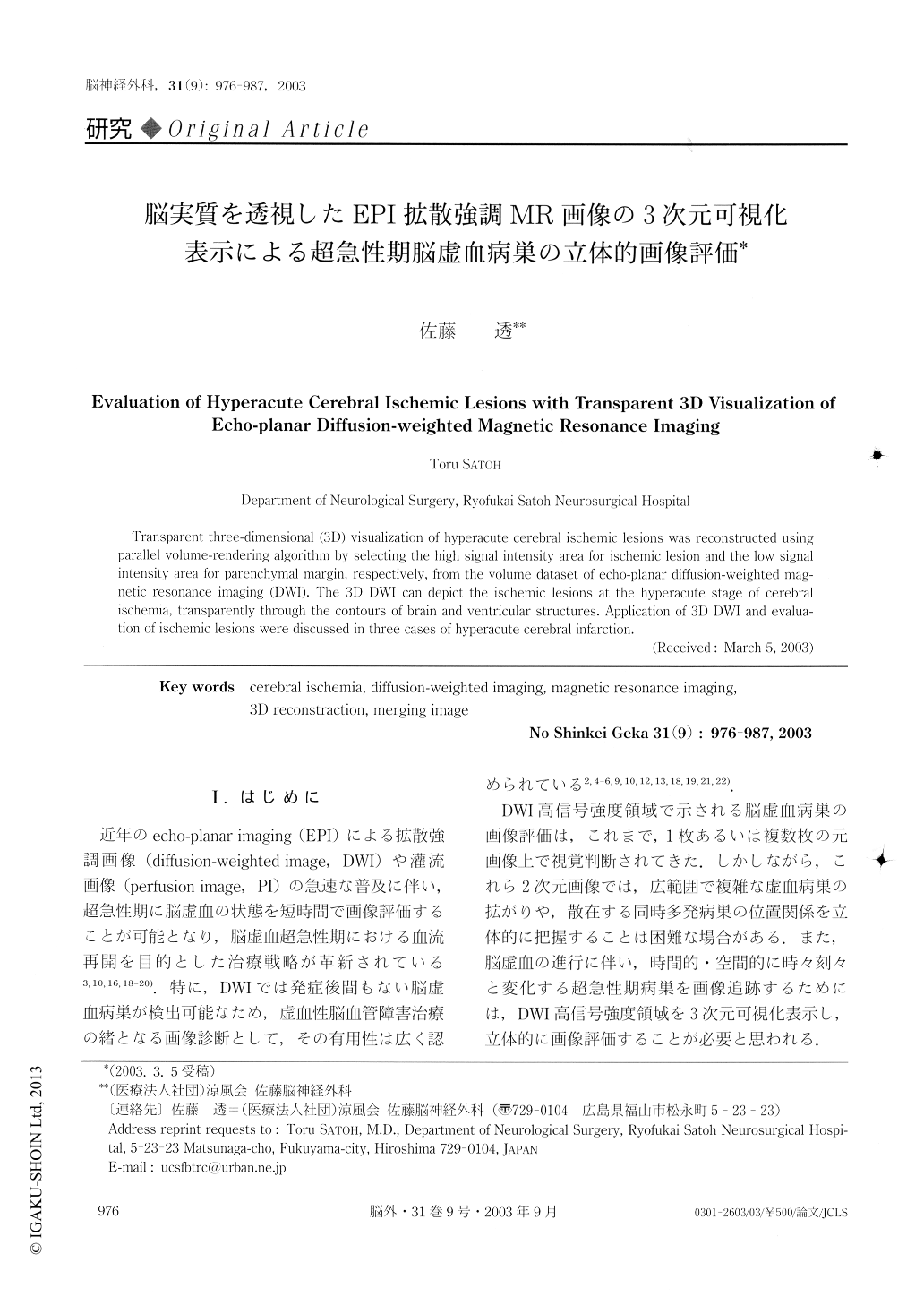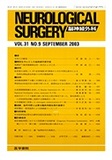Japanese
English
- 有料閲覧
- Abstract 文献概要
- 1ページ目 Look Inside
Ⅰ.はじめに
近年のecho-planar imaging(EPI)による拡散強調画像(diffusion-weighted image, DWI)や灌流画像(perfusion image, PI)の急速な普及に伴い,超急性期に脳虚血の状態を短時間で画像評価することが可能となり,脳虚血超急性期における血流再開を目的とした治療戦略が革新されている3,10,16,18-20).特に,DWIでは発症後間もない脳虚血病巣が検出可能なため,虚血性脳血管障害治療の緒となる画像診断として,その有用性は広く認められている2,4-6,9,10,12,13,18,19,21,22).
DWI高信号強度領域で示される脳虚血病巣の画像評価は,これまで,1枚あるいは複数枚の元画像上で視覚判断されてきた.しかしながら,これら2次元画像では,広範囲で複雑な虚血病巣の拡がりや,散在する同時多発病巣の位置関係を立体的に把握することは困難な場合がある.また,脳虚血の進行に伴い,時間的・空間的に時々刻々と変化する超急性期病巣を画像追跡するためには,DWI高信号強度領域を3次元可視化表示し,立体的に画像評価することが必要と思われる.
Transparent three-dimensional (3D) visualization of hyperacute cerebral ischemic lesions was reconstructed using parallel volume-rendering algorithm by selecting the high signal intensity area for ischemic lesion and the low signal intensity area for parenchymal margin, respectively, from the volume dataset of echo-planar diffusion-weighted mag-netic resonance imaging (DWI). The 3D DWI can depict the ischemic lesions at the hyperacute stage of cerebral ischemia, transparently through the contours of brain and ventricular structures.

Copyright © 2003, Igaku-Shoin Ltd. All rights reserved.


